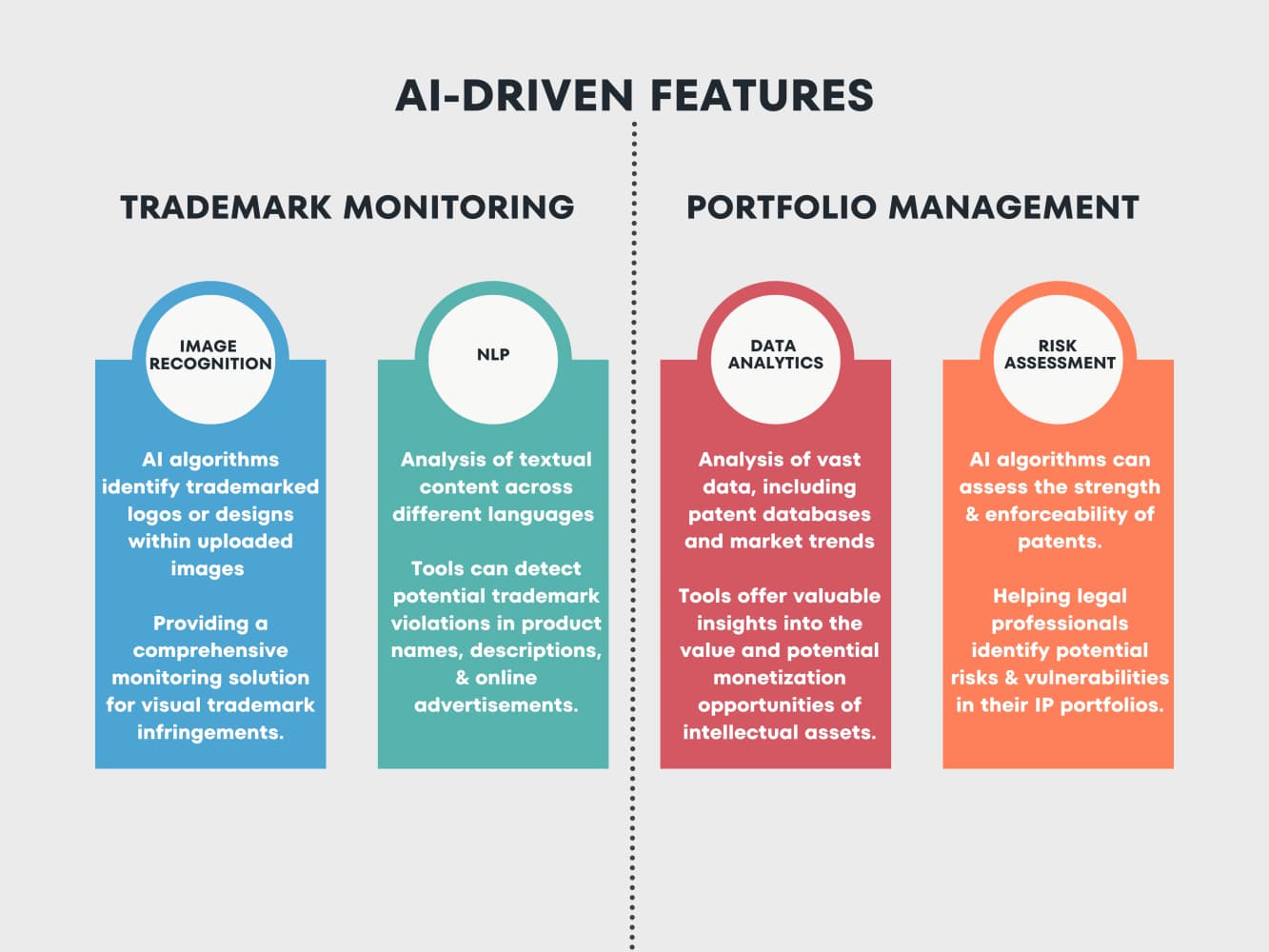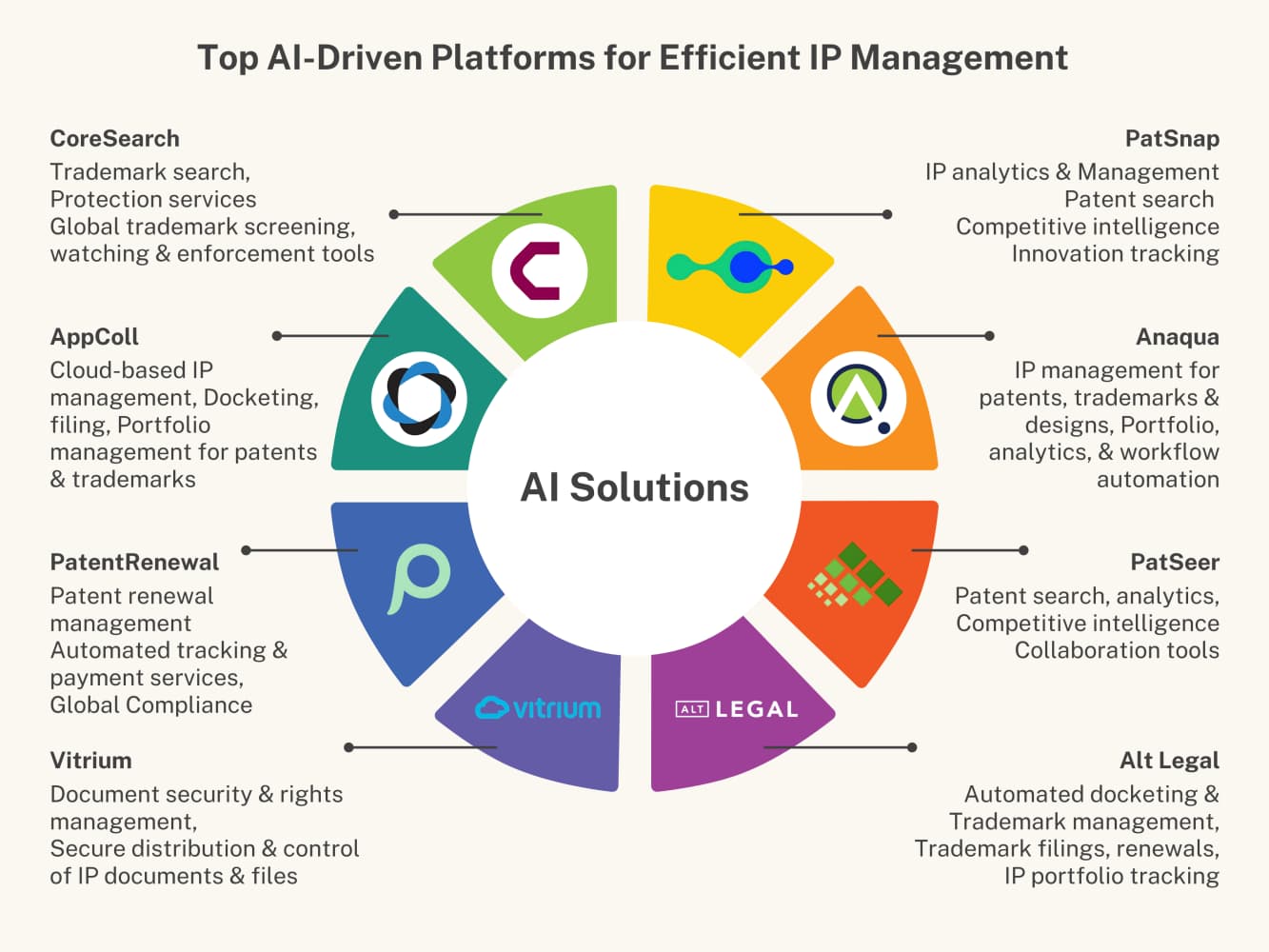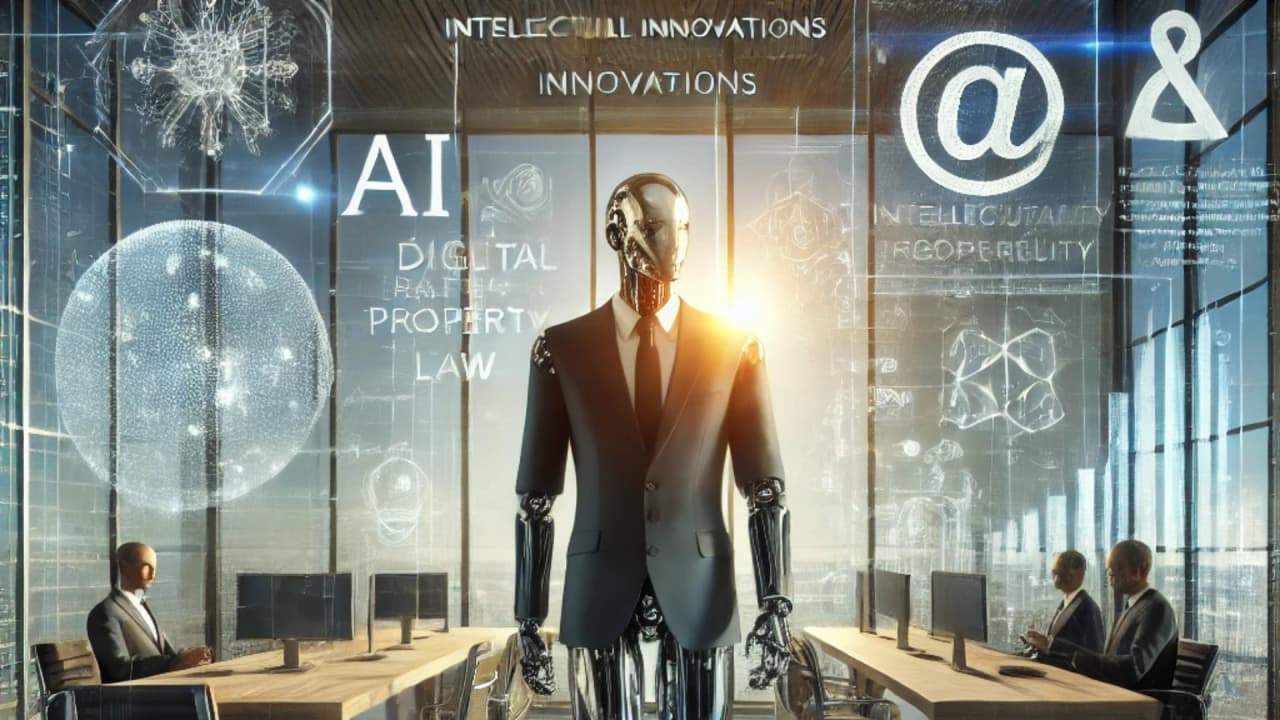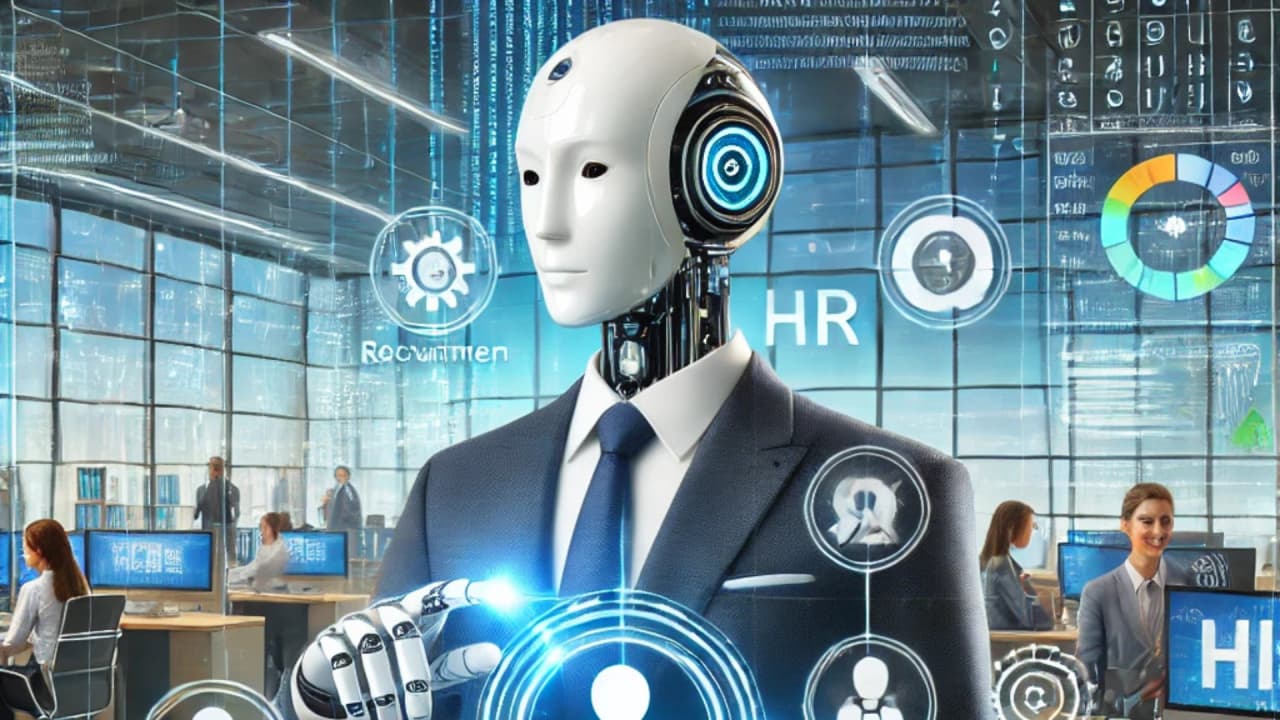Artificial intelligence (AI) is quickly changing how intellectual property law works. Already back in 2020, findings showed how AI tools will be increasingly utilized by legal professionals and now they are using AI more than ever to make complex tasks easier and more accurate in areas like patent analysis, trademark monitoring, and managing IP portfolios.
Explore and Master Your Legal Agreements and Contract Management with AI at Legaliser.com.
AI in Intellectual Property Law is becoming indispensable. It offers unprecedented efficiency in patent analysis, aiding in prior art searches that ensure inventions are both valid and unique. Trademark monitoring has also evolved, with AI-powered tools detecting infringements through advanced techniques such as image recognition and natural language processing.
In this article, you’ll explore several brilliant innovations and AI tools that are evolutionizing and revolutionizing the field:
- AI algorithms for patent analysis: Enhancing efficiency and accuracy.
- Advanced trademark monitoring solutions: Proactively safeguarding brands.
- AI-driven portfolio management tools: Optimizing intellectual asset strategies.
These advancements not only improve operational workflows but also present unique challenges that require careful navigation by legal professionals.
1. The Role of Artificial Intelligence in Intellectual Property Law
Artificial intelligence (AI) is revolutionizing the field of intellectual property law. It encompasses the use of machines, particularly computer systems, to mimic human cognitive processes such as learning, reasoning, and error correction. As AI continues to advance, its role in IP law becomes increasingly significant, shaping how legal professionals tackle complex challenges.
Enhancing Efficiency and Accuracy with AI Algorithms for Patent Analysis
AI algorithms are proving to be invaluable tools for patent analysis, offering enhanced efficiency and accuracy. These algorithms can quickly sift through vast amounts of data to identify prior art references and assess the novelty and inventiveness of a proposed invention. By automating these processes, AI reduces the time and effort required for patent examination, enabling patent professionals to focus on more complex tasks.
Key benefits of AI algorithms for patent analysis include:
Faster Prior Art Search: With the ability to analyze millions of documents within seconds, AI algorithms streamline the prior art search process. They identify existing inventions that could potentially render a new patent invalid, ensuring that patents are both valid and unique.
Improved Patent Examination: AI-powered tools assist patent experts in analyzing patents by extracting essential information from patent documents, identifying key features, and providing insights into potential infringement risks.
Proactively Safeguarding Brands with Advanced Trademark Monitoring Solutions
Trademark monitoring has evolved significantly with the advent of AI-powered tools. These solutions leverage advanced techniques such as image recognition and natural language processing to detect potential trademark infringements proactively. By continuously monitoring online platforms, marketplaces, and social media channels, these tools alert brand owners to any unauthorized use or misuse of their trademarks.
Optimizing Intellectual Asset Strategies with AI-Driven Portfolio Management Tools
AI-driven portfolio management tools offer strategic advantages by optimizing intellectual asset strategies. These tools leverage data analytics and machine learning algorithms to assist legal professionals in managing their IP portfolios more effectively. By providing valuable insights into the competitive landscape and identifying potential licensing or partnership opportunities, AI-driven portfolio management tools empower legal professionals to make informed decisions regarding their intellectual assets.
Key AI features of trademark monitoring solutions & portfolio management tools

As AI continues to advance, it brings both opportunities and challenges to the field of intellectual property law. Legal professionals must navigate these advancements carefully to harness the benefits while ensuring ethical use and compliance with existing regulations. Embracing AI technologies in IP law can lead to improved efficiency, more robust patent analysis, proactive brand protection, and optimized intellectual asset strategies.
How AI is Changing IP Policy and Regulations
AI is making a big impact on how patents are examined and approved. Here are some ways it’s happening:
Assisting Patent Professionals: Tools based on AI are helping patent experts with their work. They make tasks like searching for existing inventions and analyzing patents much faster and easier.
Improving Prior Art Search: AI algorithms can go through millions of documents to find earlier inventions that could make a new patent invalid. For those looking for open-source solutions, Project PQ offers a powerful and accessible platform for prior art search. This innovative open-source platform leverages advanced AI to provide comprehensive patent analysis and search capabilities, making it an excellent resource for professionals who need effective IP management tools without the costs associated with proprietary solutions. By integrating Project PQ into their workflow, users can enhance their prior art searches, ensuring thorough and accurate results while benefiting from the collaborative and transparent nature of open-source technology.
Offering Insights from Patent Analysis: By looking at patterns and trends in existing patents, AI can provide valuable information for making strategic decisions.
The Benefits of Using AI in Intellectual Property Law
The use of AI brings several advantages to the field of IP law:
Efficiency: With the help of AI tools, tasks that used to take days or weeks can now be done in hours or even minutes.
Accuracy: Machines are less prone to errors compared to humans, ensuring more precise results.
Cost Savings: By automating certain processes, legal firms can reduce their expenses on manpower and resources.
Enhanced Decision-Making: Access to comprehensive data analysis allows lawyers to make better-informed choices.
The Challenges Posed by AI in Intellectual Property Law
While AI offers many benefits, there are also ethical and legal concerns that need to be addressed:
Biased Algorithms: If the data used to train an AI system is biased, it can lead to unfair outcomes in patent examinations.
Data Privacy: The use of sensitive information during the patent process raises questions about privacy and security.
Ownership of AI-Generated Inventions: Determining the rightful owner of an invention created by AI can be complex under current laws.
Legal professionals must understand these issues and find ways to navigate them responsibly, ensuring compliance with regulations and upholding ethical standards.
The integration of AI in intellectual property law represents significant progress, but it also requires careful thought about its impact on policies and practices.
Streamline Your Legal Agreements and Contract Management with AI at Legaliser.com.
2. Brilliant Applications of AI in Patent Analysis
Thorough patent analysis ensures the validity and uniqueness of inventions, pivotal for securing intellectual property rights. AI-powered automation tools bring significant enhancements to this process by leveraging advanced algorithms to increase efficiency and accuracy (Homaira Huda Shomee et al., 2024)
Key Automation Tools in Patent Analysis
Several leading platforms exemplify the integration of AI into evidence analysis and management, offering comprehensive solutions.

PatSnap: Leverages advanced AI to provide comprehensive solutions for IP analytics and management. It offers robust tools for patent searching, competitive intelligence, and tracking innovation trends. Capterra Rating: 4.7/5
Anaqua: Delivers an integrated suite of IP management solutions, focusing on patents, trademarks, and designs. Its platform enhances workflow automation, portfolio management, and detailed analytics. FeaturedCustomers Rating: 4.7/5
PatSeer: A powerful platform designed for in-depth patent searching and analysis. It includes competitive intelligence features and collaborative tools to streamline IP management processes. Capterra Rating: 4.5/5
Alt Legal: Specializes in automated IP docketing and trademark management. The platform simplifies trademark filings, renewals, and offers extensive tracking capabilities for IP portfolios. Capterra Rating: 4.9/5
Vitrium: Focuses on document security and rights management. It ensures secure distribution and control of IP-related documents, providing robust protection for sensitive information. Capterra Rating: 4.7/5
PatentRenewal: Simplifies the management of patent renewals. It automates tracking and payment services, ensuring compliance with global regulations and timely renewals. G2 Rating: 4.8/5
AppColl: Offers a cloud-based solution for managing IP portfolios. The platform facilitates docketing, filing, and overall management of patents and trademarks with ease. FeaturedCustomers Rating: 4.8/5
CoreSearch: Provides global trademark search and protection services. Its platform includes comprehensive tools for screening, monitoring, and enforcing trademark rights worldwide. FeaturedCustomers Rating: 4.8/5
Additional solutions for corporations and lawfirms are:
LexisNexis IP: Offers a comprehensive suite of tools for IP management, including patent searches, analytics, and competitive intelligence. It streamlines the entire IP workflow for legal professionals by offering various solutions, including but not limited to:
- PatentSight+: Provides robust patent analytics to evaluate patent quality and strength, offering insights into IP portfolios and competitive landscapes.
- LexisNexis® IPlytics: Delivers IP analytics and market intelligence, integrating patent data, litigation information, and market insights.
- LexisNexis Cipher: Offers advanced IP analytics and competitive intelligence solutions, enabling detailed patent analysis and strategic decision-making with AI-powered insights.
Rowan Patents: Provides AI-driven solutions for patent prosecution and management. Its tools enhance the quality and efficiency of drafting, filing, and analyzing patents.
The World Intellectual Property Organization (WIPO) is actively exploring how AI intersects with IP policy through consultations. These discussions are crucial as they shape future regulations regarding AI’s role in intellectual property.
Case Study: Octimine
Octimine offers an advanced AI-powered patent search and analysis platform designed to optimize IP management for professionals. Leveraging cutting-edge AI algorithms, Octimine provides robust semantic and Boolean search capabilities, ensuring comprehensive and precise patent searches. The platform features interactive analytics and customizable tagging, enabling users to efficiently monitor and manage patent portfolios. This technology-driven approach enhances workflow efficiency and strategic decision-making for IP professionals, making it an indispensable tool in the intellectual property landscape.
Significance of Ongoing Monitoring: Ensures patents remain protected and valuable.
AI-Powered Solutions: Utilize advanced algorithms for precise patent search and analysis.
Octimine’s Role: Provides proactive enforcement through advanced monitoring and management tools.
Challenges with Non-Human Entities: Require new legal frameworks to address unique issues.
Transforming patent monitoring through AI technology highlights the importance of adopting innovative solutions to safeguard intellectual property effectively.
Legal Implications of AI-Generated Inventions
Inventions autonomously generated by AI systems pose unique legal challenges. These challenges arise from the fact that AI is capable of creating novel and inventive solutions without direct human intervention. Key issues that need to be addressed include:
Inventorship: Determining whether the AI or the human programmer should be credited as the inventor. Traditionally, patent laws require an invention to be attributed to a human inventor. However, with AI-generated inventions, the question of who should be recognized as the inventor becomes more complex. While the AI system may have come up with the invention, it was ultimately programmed and trained by a human. This raises important questions about intellectual property rights and recognition.
Ownership: Addressing who holds the rights to an invention created by an AI system. Patent laws typically grant ownership rights to the inventor or their assignee. However, when it comes to AI-generated inventions, determining ownership can be challenging. Should it be attributed to the organization or individual who developed and owns the AI system? Or should it be shared between the AI system and its human programmer? These questions highlight the need for updated legal frameworks that can accommodate the evolving capabilities of artificial intelligence in patent analysis.
It is important for legal systems to adapt and provide clarity on these issues to ensure fair and effective protection of intellectual property rights in an era of advancing AI technology.
3. Transforming Trademark Monitoring through AI Technology
Effective trademark monitoring is essential to protect brands from infringement. Ongoing enforcement ensures that trademarks maintain their value and exclusivity.
AI-powered solutions are revolutionizing the detection and mitigation of trademark infringements. Advanced techniques like image recognition and natural language processing (NLP) enable more accurate and efficient analysis. These technologies can identify potential infringements across various platforms, providing a comprehensive monitoring solution.
Addressing Non-Human Entities in IP
The involvement of non-human entities as inventors or potential infringers presents unique challenges. AI systems generating content or designs could potentially infringe on existing trademarks without human intervention (Lee J. et. al, 2021). Addressing these challenges may require new legal frameworks and policies to ensure fair treatment for all parties involved, though debates persist on how to best regulate these issues as highlighted in recent publications (Kretschmer M. et al., 2022), official statements, e.g. Princeton University Press statement and in courses and lectures, e.g. on Artificial Intelligence, Law, & Public Policy (SA).
4. How AI is Transforming IP Portfolio Management
Effective IP portfolio management is crucial for businesses and organizations to maintain a competitive edge. Properly managing intellectual property (IP) assets ensures that companies can protect their innovations, maximize their value, and strategically navigate the market.
AI tools are revolutionizing IP portfolio management by enhancing tasks such as:
- Risk Assessment: AI technology can predict potential risks associated with IP assets, allowing businesses to take proactive measures.
- Valuation: Automated tools assess the financial worth of IP assets more accurately, aiding in strategic decision-making.
- Decision-Making for Portfolio Optimization: Advanced algorithms analyze large datasets to recommend optimal strategies for managing and leveraging IP portfolios.
Several companies have successfully integrated AI-driven solutions into their IP management processes:
Questel’s Orbit Intelligence utilizes AI to provide comprehensive patent and trademark data analysis, enabling better decision-making in portfolio management.
PatSnap offers an innovation intelligence platform powered by AI that helps organizations identify new opportunities and mitigate risks within their IP portfolios.
By leveraging these AI capabilities, businesses can streamline their IP portfolio management processes, ensuring they remain agile and competitive in a rapidly evolving market.
5. The Future Landscape of AI and Intellectual Property Law
The future of AI in IP law has the power to bring about big changes, but it also comes with its fair share of challenges. Here are some trends that we can expect to see:
- AI-Driven Policy Formation
As AI continues to shape our world, policymakers are starting to think about creating new rules specifically for AI-related issues in IP law.
- Enhanced Predictive Analytics
In the future, AI tools might be able to give us predictions on things like whether a patent will get approved, how a lawsuit will turn out, or what trends we can expect to see in the market.
- Evolving Ethical Standards
As AI systems become more independent, we’ll need to grapple with ethical questions about who should be considered the inventor or owner of something created by an AI (Handler S., Bloomberg Law, 2022, Fisher E., University of Cincinnati Law Review Vol. 91, Holland & Knight, 2024)
These developments have major implications for professionals working in the IP industry. It’s important for them to be ready to adjust their strategies accordingly.
Transform Your Legal Agreements and Contract Management with AI at Legaliser.com.
Conclusion
Artificial intelligence is undoubtedly changing the field of intellectual property law. It is improving efficiency, accuracy, and strategic decision-making in various areas such as patent analysis, trademark monitoring, and IP portfolio management.
However, it is important to maintain a balanced approach. While AI technology offers many benefits, it should be used in conjunction with human expertise. This ensures that we can effectively navigate the complex legal and ethical issues that may arise. Human oversight is still necessary to interpret the insights generated by AI systems and make well-informed decisions.
By exploring and utilizing the innovative AI tools and solutions discussed in this article, you can stay ahead in the ever-evolving world of intellectual property. Embracing these advancements will empower you to better manage and safeguard your valuable intellectual assets.PatSnap: Leverages advanced AI to provide comprehensive solutions for IP analytics and management. It offers robust tools for patent searching, competitive intelligence, and tracking innovation trends. Capterra Rating: 4.7/5
Anaqua: Delivers an integrated suite of IP management solutions, focusing on patents, trademarks, and designs. Its platform enhances workflow automation, portfolio management, and detailed analytics. FeaturedCustomers Rating: 4.7/5
PatSeer: A powerful platform designed for in-depth patent searching and analysis. It includes competitive intelligence features and collaborative tools to streamline IP management processes. Capterra Rating: 4.5/5
Alt Legal: Specializes in automated IP docketing and trademark management. The platform simplifies trademark filings, renewals, and offers extensive tracking capabilities for IP portfolios. Capterra Rating: 4.9/5
Vitrium: Focuses on document security and rights management. It ensures secure distribution and control of IP-related documents, providing robust protection for sensitive information. Capterra Rating: 4.7/5
PatentRenewal: Simplifies the management of patent renewals. It automates tracking and payment services, ensuring compliance with global regulations and timely renewals. G2 Rating: 4.8/5
AppColl: Offers a cloud-based solution for managing IP portfolios. The platform facilitates docketing, filing, and overall management of patents and trademarks with ease. FeaturedCustomers Rating: 4.8/5
CoreSearch: Provides global trademark search and protection services. Its platform includes comprehensive tools for screening, monitoring, and enforcing trademark rights worldwide. FeaturedCustomers Rating: 4.8/5
Additional solutions for corporations and lawfirms are:
LexisNexis IP: Offers a comprehensive suite of tools for IP management, including patent searches, analytics, and competitive intelligence. It streamlines the entire IP workflow for legal professionals by offering various solutions, including but not limited to:
- PatentSight+: Provides robust patent analytics to evaluate patent quality and strength, offering insights into IP portfolios and competitive landscapes.
- LexisNexis® IPlytics: Delivers IP analytics and market intelligence, integrating patent data, litigation information, and market insights.
- LexisNexis Cipher: Offers advanced IP analytics and competitive intelligence solutions, enabling detailed patent analysis and strategic decision-making with AI-powered insights.
Rowan Patents: Provides AI-driven solutions for patent prosecution and management. Its tools enhance the quality and efficiency of drafting, filing, and analyzing patents.
The World Intellectual Property Organization (WIPO) is actively exploring how AI intersects with IP policy through consultations. These discussions are crucial as they shape future regulations regarding AI’s role in intellectual property.
Case Study: Octimine
Octimine offers an advanced AI-powered patent search and analysis platform designed to optimize IP management for professionals. Leveraging cutting-edge AI algorithms, Octimine provides robust semantic and Boolean search capabilities, ensuring comprehensive and precise patent searches. The platform features interactive analytics and customizable tagging, enabling users to efficiently monitor and manage patent portfolios. This technology-driven approach enhances workflow efficiency and strategic decision-making for IP professionals, making it an indispensable tool in the intellectual property landscape.
Significance of Ongoing Monitoring: Ensures patents remain protected and valuable.
AI-Powered Solutions: Utilize advanced algorithms for precise patent search and analysis.
Octimine’s Role: Provides proactive enforcement through advanced monitoring and management tools.
Challenges with Non-Human Entities: Require new legal frameworks to address unique issues.
Transforming patent monitoring through AI technology highlights the importance of adopting innovative solutions to safeguard intellectual property effectively.
Legal Implications of AI-Generated Inventions
Inventions autonomously generated by AI systems pose unique legal challenges. These challenges arise from the fact that AI is capable of creating novel and inventive solutions without direct human intervention. Key issues that need to be addressed include:
Inventorship: Determining whether the AI or the human programmer should be credited as the inventor. Traditionally, patent laws require an invention to be attributed to a human inventor. However, with AI-generated inventions, the question of who should be recognized as the inventor becomes more complex. While the AI system may have come up with the invention, it was ultimately programmed and trained by a human. This raises important questions about intellectual property rights and recognition.
Ownership: Addressing who holds the rights to an invention created by an AI system. Patent laws typically grant ownership rights to the inventor or their assignee. However, when it comes to AI-generated inventions, determining ownership can be challenging. Should it be attributed to the organization or individual who developed and owns the AI system? Or should it be shared between the AI system and its human programmer? These questions highlight the need for updated legal frameworks that can accommodate the evolving capabilities of artificial intelligence in patent analysis.
It is important for legal systems to adapt and provide clarity on these issues to ensure fair and effective protection of intellectual property rights in an era of advancing AI technology.
3. Transforming Trademark Monitoring through AI Technology
Effective trademark monitoring is essential to protect brands from infringement. Ongoing enforcement ensures that trademarks maintain their value and exclusivity.
AI-powered solutions are revolutionizing the detection and mitigation of trademark infringements. Advanced techniques like image recognition and natural language processing (NLP) enable more accurate and efficient analysis. These technologies can identify potential infringements across various platforms, providing a comprehensive monitoring solution.
Addressing Non-Human Entities in IP
The involvement of non-human entities as inventors or potential infringers presents unique challenges. AI systems generating content or designs could potentially infringe on existing trademarks without human intervention (Lee J. et. al, 2021). Addressing these challenges may require new legal frameworks and policies to ensure fair treatment for all parties involved, though debates persist on how to best regulate these issues as highlighted in recent publications (Kretschmer M. et al., 2022), official statements, e.g. Princeton University Press statement and in courses and lectures, e.g. on Artificial Intelligence, Law, & Public Policy (SA).
4. How AI is Transforming IP Portfolio Management
Effective IP portfolio management is crucial for businesses and organizations to maintain a competitive edge. Properly managing intellectual property (IP) assets ensures that companies can protect their innovations, maximize their value, and strategically navigate the market.
AI tools are revolutionizing IP portfolio management by enhancing tasks such as:
- Risk Assessment: AI technology can predict potential risks associated with IP assets, allowing businesses to take proactive measures.
- Valuation: Automated tools assess the financial worth of IP assets more accurately, aiding in strategic decision-making.
- Decision-Making for Portfolio Optimization: Advanced algorithms analyze large datasets to recommend optimal strategies for managing and leveraging IP portfolios.
Several companies have successfully integrated AI-driven solutions into their IP management processes:
Questel’s Orbit Intelligence utilizes AI to provide comprehensive patent and trademark data analysis, enabling better decision-making in portfolio management.
PatSnap offers an innovation intelligence platform powered by AI that helps organizations identify new opportunities and mitigate risks within their IP portfolios.
By leveraging these AI capabilities, businesses can streamline their IP portfolio management processes, ensuring they remain agile and competitive in a rapidly evolving market.
5. The Future Landscape of AI and Intellectual Property Law
The future of AI in IP law has the power to bring about big changes, but it also comes with its fair share of challenges. Here are some trends that we can expect to see:
- AI-Driven Policy Formation
As AI continues to shape our world, policymakers are starting to think about creating new rules specifically for AI-related issues in IP law.
- Enhanced Predictive Analytics
In the future, AI tools might be able to give us predictions on things like whether a patent will get approved, how a lawsuit will turn out, or what trends we can expect to see in the market.
- Evolving Ethical Standards
As AI systems become more independent, we’ll need to grapple with ethical questions about who should be considered the inventor or owner of something created by an AI (Handler S., Bloomberg Law, 2022, Fisher E., University of Cincinnati Law Review Vol. 91, Holland & Knight, 2024)
These developments have major implications for professionals working in the IP industry. It’s important for them to be ready to adjust their strategies accordingly.
Transform Your Legal Agreements and Contract Management with AI at Legaliser.com.
Conclusion
Artificial intelligence is undoubtedly changing the field of intellectual property law. It is improving efficiency, accuracy, and strategic decision-making in various areas such as patent analysis, trademark monitoring, and IP portfolio management.
However, it is important to maintain a balanced approach. While AI technology offers many benefits, it should be used in conjunction with human expertise. This ensures that we can effectively navigate the complex legal and ethical issues that may arise. Human oversight is still necessary to interpret the insights generated by AI systems and make well-informed decisions.
By exploring and utilizing the innovative AI tools and solutions discussed in this article, you can stay ahead in the ever-evolving world of intellectual property. Embracing these advancements will empower you to better manage and safeguard your valuable intellectual assets.





